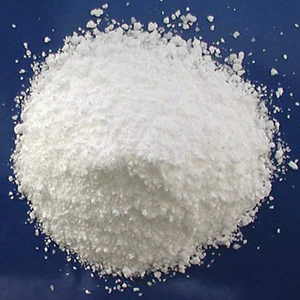
Calcium disodium EDTA is an odorless crystalline powder with a slightly salty flavor (1). It's a popular food additive, used as a preservative and flavoring agent. Calcium disodium EDTA works as a chelating agent.
The USA FDA has approved calcium disodium EDTA as a safe food additive in small quantities. The E number of Calcium disodium EDTA is 385.
It is used in Mayonnaise Salad dressings, Sauces and Spreads, Pickled Vegetables, Canned crabs, Carbonated soft drinks & Alcoholic beverages. It is also used in Beauty and Cosmetic products, Paper and Textile.
General Specifications of Calcium Disodium EDTA
Synonym: Calcium Disodium Ethylene Diamine Tetraacetate.
CAS No.: 62-33-9 (Anhydrous); 6381-92-6 (Dihydrate).
HSN No.: 29173990.
Appearance: White Crystalline Powder.
Solubility: Soluble In Water, Clear Solution.
Assay: 99.0% Minimum.
pH: 6.0 - 8.5.
Heavy Metals: 0.002% Maximum.
Calcium Disodium EDTA FCC Food Grade
Calcium Disodium Ethylenediaminetetraacetate; Calcium
Disodium (Ethylenedinitrilo)tetraacetate; Calcium Disodium EDTA.
C10H12CaN2Na2O8-2H2O --- Formula wt 410.30
INS: 385 --- CAS: [23411-34-9]
DESCRIPTION
Calcium Disodium EDTA occurs as white, crystalline granules or as a white to off white powder. It is slightly hygroscopic and is stable in air. It is freely soluble in water.
Function: Preservative; sequestrant.
REQUIREMENTS
Identification:
A. A 1:20 aqueous solution responds to the oxalate test for Calcium and to the flame test for Sodium.
B. The infrared absorption spectrum of a mineral oil dispersion of sample exhibits maxima only at the same wavelengths as those of a similar preparation of USP EDTA Calcium Disodium Reference Standard.
C. Add 2 drops of ammonium thiocyanate and 2 drops of ferric chloride to 5 mL of water contained in a test tube. Add about 50 mg of sample to the deep red solution so obtained, and mix. The deep red color disappears.
Assay: Not less than 97.0% and not more than 102.0% of C10H12CaN2Na2O8, calculated on the anhydrous basis.
Lead: Not more than 4 mg/kg.
Magnesium-Chelating Substances: Passes test.
Nitrilotriacetic Acid: Not more than 0.1%.
pH of a 1:100 Solution: Between 6.5 and 7.5.
Water: Not more than 13.0%.
EDTA Calcium Disodium USP NF Grade
C10H12CaN2Na2O8.xH2O (anhydrous) --- 374.27
Calciate(2-), [[N,N′-1,2-ethanediylbis[N-(carboxymethyl)glycinato]](4-)-N,N′,O,O′,ON,ON′]-, disodium, hydrate, (OC-6-21)-. Disodium[(ethylenedinitrilo)tetraacetato]calciate(2-)hydrate [23411-34-9]. Anhydrous [62-33-9].
EDTA Calcium Disodium is a mixture of the dihydrate and trihydrate of calcium disodium ethylenediaminetetraacetate (predominantly the dihydrate). It contains not less than 97.0 percent and not more than 102.0 percent of C10H12CaN2Na2O8, calculated on the anhydrous basis.
Packaging and storage: Preserve in tight containers.